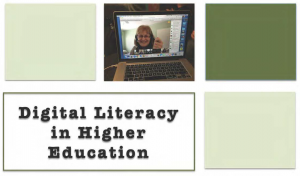Finding My Path
I’ve been writing a two page research plan. This is a requirement for funding proposals, so it’s important to get it right.
As I do this, I’m trying to find the path through all the research that has become a forest of information, filling the landscape, creating barriers to my thinking. I need to find a path through. It may not be the true path, there may be many false leads ahead. But for now, I’m lost within a wilderness without a sense of which direction to move. I keep locating information that has potential impact on where I think I’m going. I have a pocket full of references to find and get. I have a pile of research reports to read and write four sentence summaries – building my BINS with information. This is not only for the current course I’m taking, but for the topics and links to possible research directions.
Today I’ll meet with my supervisor to attempt work on edits to a draft version of my two page summary. I know that there will be many more in the coming weeks. I’ll continue to figure out a better way to say what I need to communicate, finding the right words to use in the text I produce. I’m bound by the barriers of letters on a page. Is there a better way to word it? Is there a different phrase to use that makes the meaning clearer?
 I’ve just reread a report Digital Literacy in Higher Education, produced from the University of Rhode Island Winter Symposium on Digital Literacy in Higher Education. Since my image appears on the cover of this document, it caught my eye. I’m focusing on the need for critical digital and media literacy as a key factor in developing an open, online presence as a professional, so this report may also provide something that could help my research. I’ve also located and read a research article written by Royce Kimmons (2016) about Expansive Openness in Teacher Practice which links directly to my research.
I’ve just reread a report Digital Literacy in Higher Education, produced from the University of Rhode Island Winter Symposium on Digital Literacy in Higher Education. Since my image appears on the cover of this document, it caught my eye. I’m focusing on the need for critical digital and media literacy as a key factor in developing an open, online presence as a professional, so this report may also provide something that could help my research. I’ve also located and read a research article written by Royce Kimmons (2016) about Expansive Openness in Teacher Practice which links directly to my research.
I’m still trying to find my path through.
In the report from the Media Education Lab on digital literacy in higher education, Mia Zamora writes about the keynote address made by T. Mills Kelly who uses hiking trails as a metaphor for digital literacy. “To put it as simply as possible, path is a way of making sense of the world. There are infinite ways to cross a landscape; the options are overwhelming, and pitfalls abound. The function of a path is to reduce this teeming chaos into an intelligible line.” (p. 8). This quote resonates today, as I work to make sense of my PhD world, try to find a way to cross this landscape, avoid some of the pitfalls, and draw an intelligible line through the teeming chaos of my current research collection.
References
Hobbs, R., Ranieri, M., Markus, S., Fortuna, C., Zamora, M., & Coiro, J. (2017). Digital literacy in higher education: A report. Providence, RI: Media Education Lab. Retrieved from https://mediaeducationlab.com/sites/default/files/Digital%20Literacy%20in%20HigherEd%202017%20final.pdf
Kimmons, R. (2016). Expansive openness in teacher practice. Teachers College Record, 118(9), 1-26.
